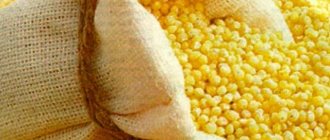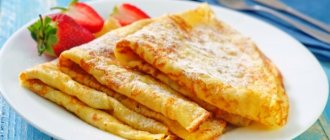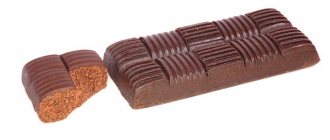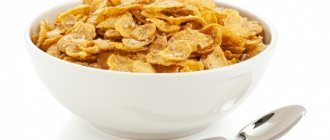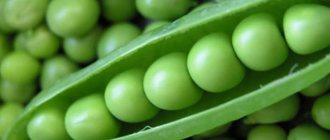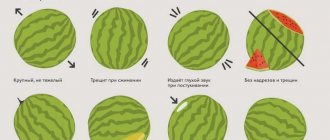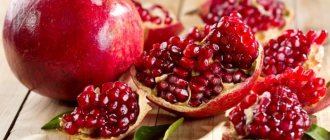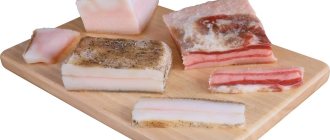In order for the baby to receive from breast milk all the vitamins, minerals, and other useful substances necessary for its full development, the nursing mother needs to eat properly, and therefore varied. Her diet should be balanced in protein, fat and carbohydrates. The menu must include cereal porridge. However, women often doubt the usefulness of rice during breastfeeding due to the property of rice grains to consolidate stool. But nutritionists answer with full confidence that nursing mothers can and should eat rice. It is the richest source of plant proteins, carbohydrates and many vitamins, gives energy and a feeling of fullness. How to properly introduce rice porridge into the diet so that it benefits the baby and does not cause side effects from its consumption?
Composition and benefits of rice
In India and China, in the South and East, rice is the basis for preparing any dishes and a key product in the diet. It is served as a side dish and as a main course, as well as in salads, soups, hot and cold appetizers, desserts, etc. In the middle zone and in the North, it was also appreciated and loved. Which will not surprise you at all when you find out how many different benefits are contained in rice.
Rice grains are a valuable source of carbohydrates and vegetable proteins. They do not contain gluten, a cereal protein that often causes allergic reactions in infants. The starch in their composition has the property of enveloping the intestinal mucosa, promoting its restoration. However, it also gives rice porridge a fixing effect. But it is quite possible to combat this, for example, by preparing rice dishes with the addition of fruits and vegetables. And the vitamin and mineral composition of rice grains is very diverse.
Rice is a genus of annual and perennial herbaceous plants of the cereal family.
In South Korea, rice occupies the same place of honor in the diet as bread in our diet. Any dish that is served comes with a second dish of rice.
Table: chemical composition of rice cereal, the effect of the substances it contains on the body
| Element | Quantity per 10 g of edible part of the product | Consumption rate for breastfeeding | Effect on the body |
| Calorie content | 33.3 kcal | 1356 kcal |
|
| Squirrels | 0.7 g | 76 g |
|
| Fats | 0.1 g |
| |
| Carbohydrates | 7.4 g |
| |
| Vitamins | |||
| Vitamin B1, thiamine | 0.01 mg | 1.8 mg |
|
| Vitamin B4, choline | 7.8 mg | 500 mg |
|
| Vitamin B5, pantothenic acid | 0.04 mg | 7 mg |
|
| Vitamin B6, pyridoxine | 0.02 mg | 2.5 mg |
|
| Vitamin E, alpha tocopherol, TE | 0.04 mg | 19 mg |
|
| Vitamin RR, NE | 0.33 mg | 23 mg |
|
| Macronutrients | |||
| Potassium, K | 10 mg | 2500 mg |
|
| Calcium, Ca | 0.8 mg | 1400 mg |
|
| Silicon, Si | 10 mg | 30 mg |
|
| Magnesium, Mg | 5 mg | 450 mg |
|
| Sodium, Na | 1.2 mg | 1300 mg |
|
| Sera, S | 4.6 mg | 1000 mg |
|
| Phosphorus, Ph | 15 mg | 1000 mg |
|
| Chlorine, Cl | 2.5 mg | 2300 mg |
|
| Microelements | |||
| Iron, Fe | 0.1 mg | 18 mg |
|
| Manganese, Mn | 0.13 mg | 2.8 mg |
|
| Zinc, Zn | 0.14 mg | 15 mg |
|
| Digestible carbohydrates | |||
| Starch and dextrins | 7.3 g | ~ |
|
| Fatty acid | |||
| Omega-6 fatty acids | 0.02 g | from 4.7 to 17 g |
|
| Saturated fatty acids | 0.03 g | max 18.8 g |
|
| Monounsaturated fatty acids | 0.03 g | from 18.6 to 48.7 g |
|
| Polyunsaturated fatty acids | 0.02 g | from 11.3 to 20.7 g |
|
A 250 ml glass contains approximately 230 g of rice grains, and a 200 ml glass contains approximately 185 g. A heaped tablespoon holds 25 g of rice grains, and a heaped teaspoon holds 8 g. These figures may vary depending on the variety rice
Types and varieties of rice
Rice grains come in different types; they are distinguished depending on the variety, the shape of the grains, and the method of processing. Different varieties are suitable for preparing different dishes:
- basmati rice, an elite Indian variety with a spicy nutty flavor, is used to prepare pilaf and the popular Italian risotto,
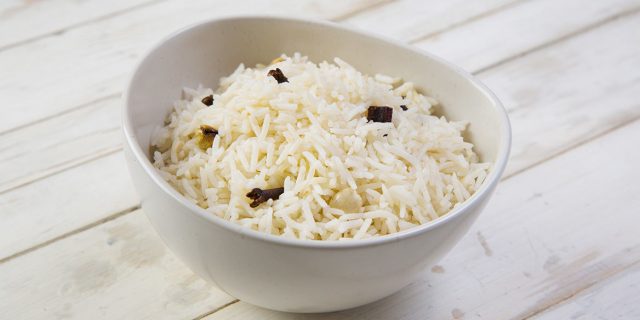
Basmati rice - extra long rice for pilaf
- made from red rice - it does not get overcooked, has a delicate nutty taste, is nutritious and healthy - pilaf, it is also added to salads,
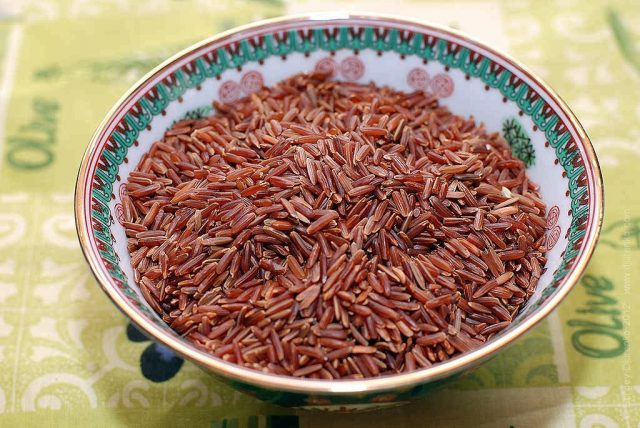
Red rice - for pilaf and salads
- from jasmine rice - grown in Thailand, with a delicate grain structure - side dishes, salads, desserts,
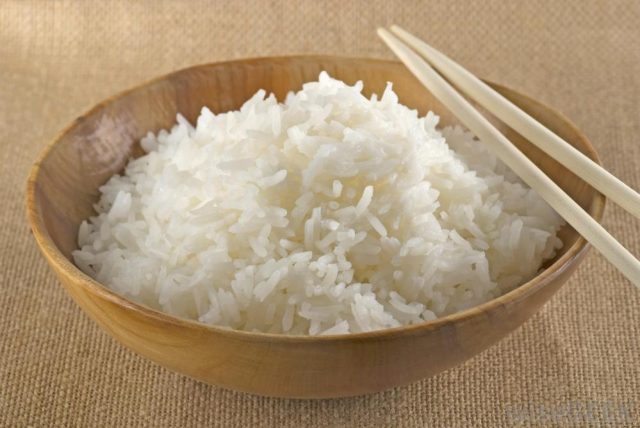
Jasmine rice - for salads and side dishes
- from wild rice with long black grains - among all varieties of rice, this contains the most nutrients, but it needs to be cooked for a long time (30-60 minutes) - soups, salads, snacks, desserts and pie fillings,
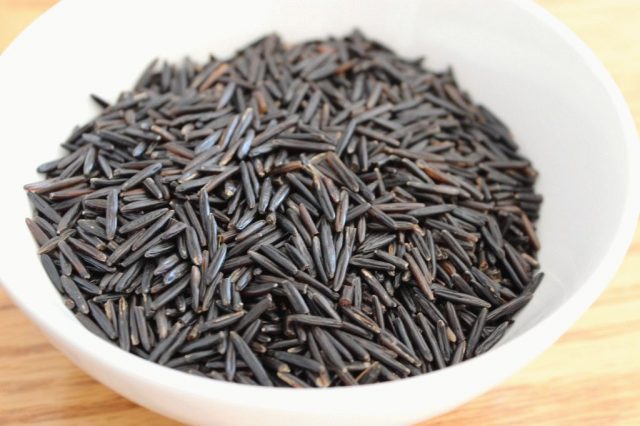
Wild rice - for salads and desserts
- from expensive black Tibetan rice - its beet-purple grains are cooked for about 40 minutes and contain a large amount of vegetable protein - side dishes and salads,
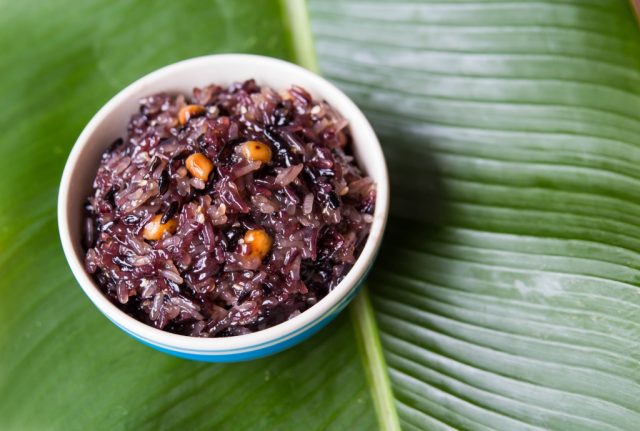
Black Tibetan rice - for side dishes and salads
- from Italian arborio - it perfectly absorbs the aroma and taste of any dish - soups and risotto,
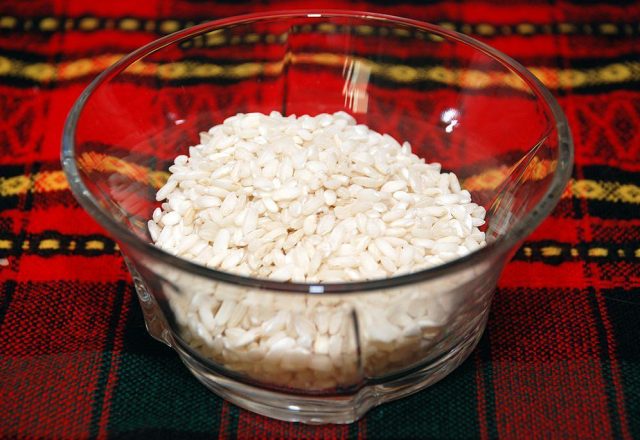
Arborio rice - for soups and risotto
- from Egyptian Camolino rice - it is sticky and soft - sushi, porridge, desserts,
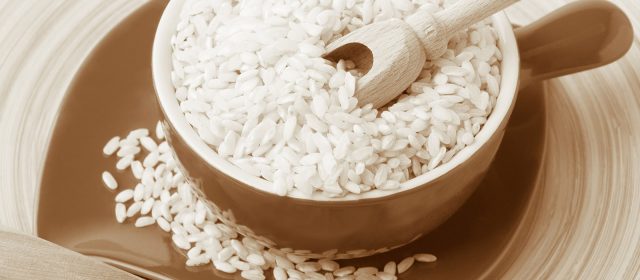
Camolino rice - for sushi and porridges
- from Spanish medium grain rice - pilaf,
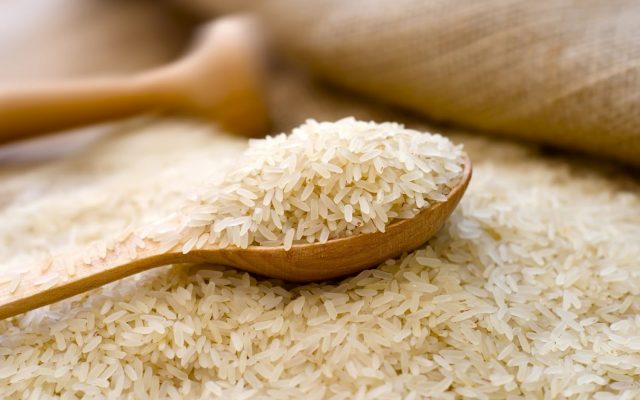
Spanish medium grain rice - for pilaf
- from Krasnodar - universal - soups and cereals, puddings and sushi,
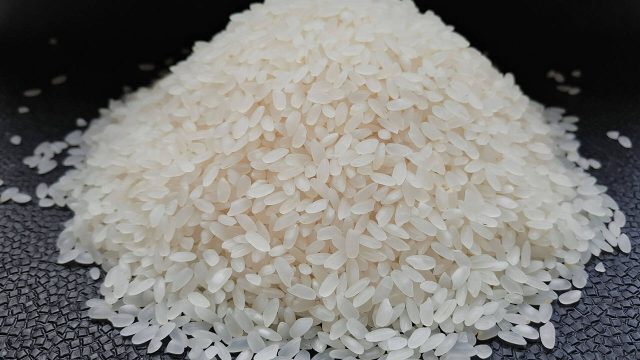
Krasnodar rice - for porridges and puddings
- from Uzbek rice - crumbly, large and sweet in taste - pilaf.
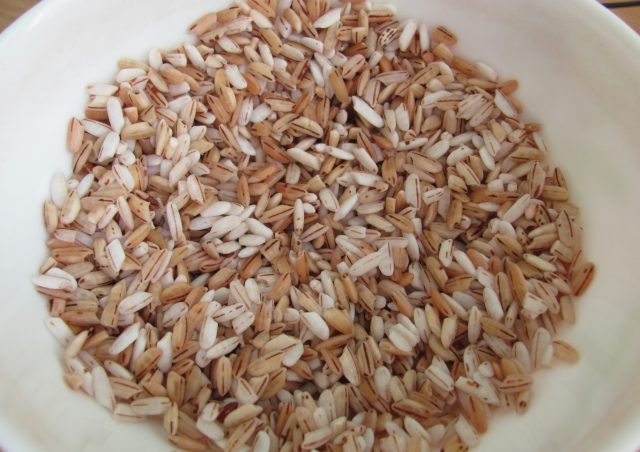
Uzbek rice - for pilaf
It is advisable to select the type of rice depending on the dish you are going to prepare from it. Then its taste and appearance will definitely meet your expectations. Glutinous rice will not make a fluffy pilaf, and rice grains with low starch content will not form sushi.
According to the processing method, rice can be:
- unpolished - the most healthy, but has brown or red, sometimes black grains, and takes a long time to cook,
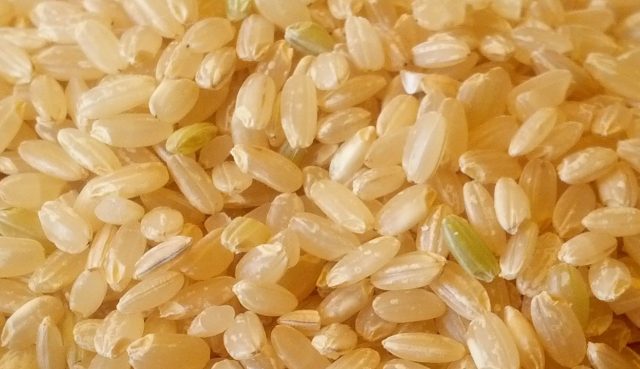
Unpolished rice contains the largest amount of vitamins and microelements
- polished - has white smooth grains without a shell, is almost as useful, but cooks much faster,
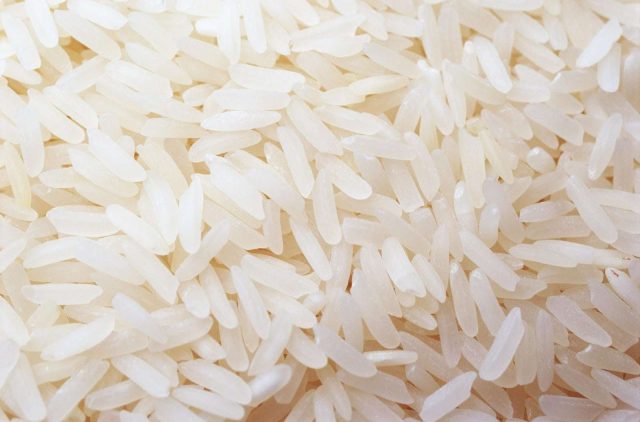
Milled rice - white and smooth
- steamed - polished, steamed, healthy, crumbly, easily digestible.
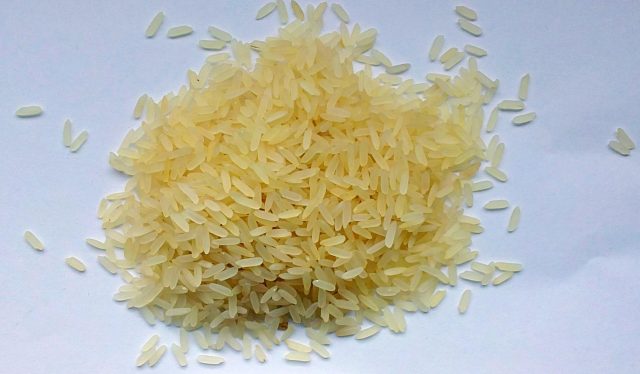
Steamed rice - milky with translucent grains
According to the shape and size of the grains you can find:
- round grain rice (with grains 4 mm long) - contains a lot of starch, boils well, porridges and puddings from it are tender, have a creamy consistency, soups, casseroles, sushi are also prepared from it,
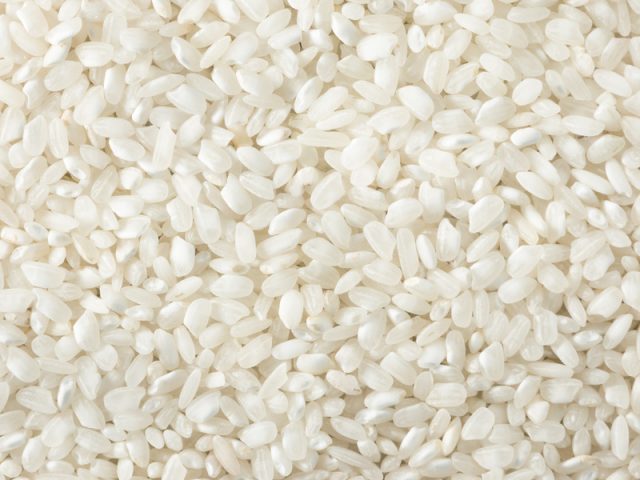
Round grain rice - grain length 4 mm
- medium grain rice (with grains 5–6 mm long) - soft, tender, sticky, absorbs a lot of water - for soup, pilaf, risotto,
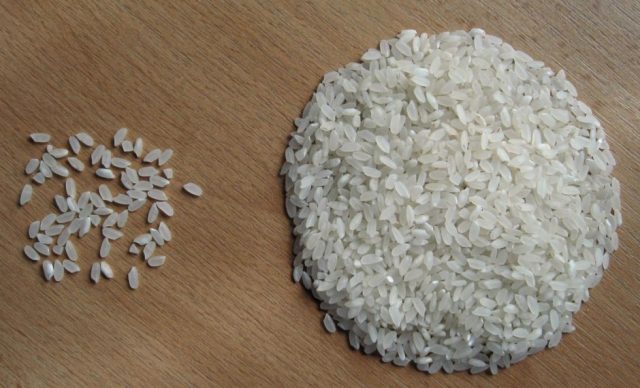
Medium grain rice - grain length 5–6 mm
- long grain rice (with grains 6–8 mm long) - for any side dishes, universal - crumbly, does not stick together, dense in consistency.
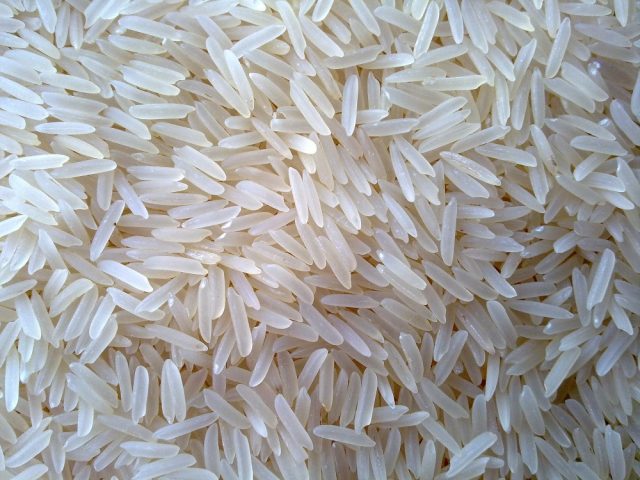
Long grain rice - grain length 6–8 mm
Today there are more than 150 varieties of rice in the world. Each variety has its own original taste and aroma. Each, depending on the shape of the grains and processing, starch content and consistency, is used to prepare different dishes.
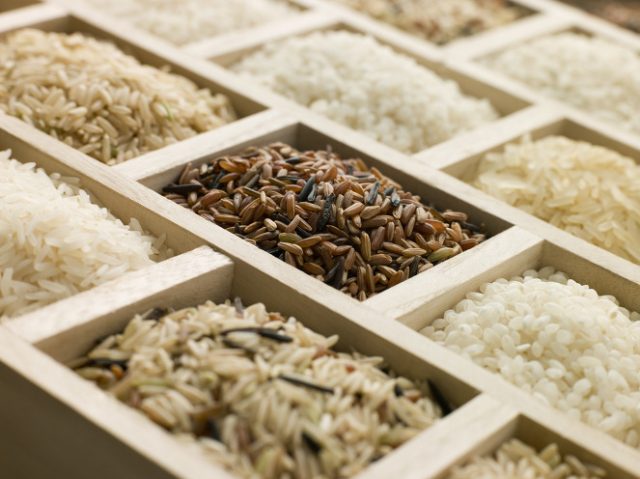
More than 150 varieties of rice are known, the most useful is brown, unpeeled rice.
It will not be superfluous for you to know which rice is best to choose for cooking porridge. After all, this cereal crop is useful not only for nursing mothers. Rice porridge is one of the first to be introduced into infant feeding, which means that very soon you will be eating it together with your baby.
Depending on the type of stool the baby has, a nursing mother can cook from rice:
- thin porridge with water, soup with boiled grains, short-grain rice casserole - if the baby’s stool is loose,
- steamed rice with vegetables or fruits, long grain slightly undercooked - if the baby is constipated.
It is better for mother to avoid fatty pilaf during lactation. It can cause flatulence and colic in a newborn.
Video: white rice versus brown rice - “Life is healthy!”
Cooking rice while breastfeeding
The rice side dish should be slightly firm and crumbly, and have a snow-white color. Slightly boiled rice is allowed in soups, desserts and puddings. How much rice is boiled can be judged based on the selected type of this cereal crop. There are several types of rice depending on the shape of the grains and their processing.
Types of rice by processing method:
- steamed - does not stick together, has fewer useful vitamins and microelements than non-steamed varieties. Suitable for preparing crumbly dishes, cooks quickly;
- unpolished - brown rice (sometimes even red or black). It has many beneficial properties, but due to its hardness it requires longer cooking;
- polished - white grains, inferior in useful qualities to unpolished, but cooks quickly.
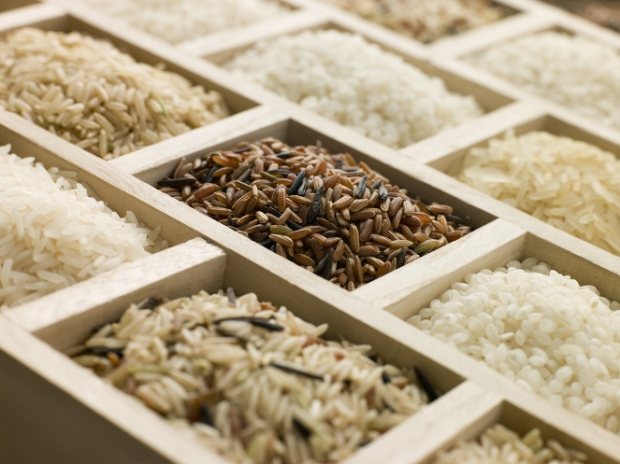
Types of rice according to grain shape:
- long-grain - used for preparing crumbly dishes, since the grains do not stick together during cooking;
- medium grain - absorbs more liquid than long grain rice, used for preparing pilaf and risotto. Prepared dishes from this puffed rice are soft and tender;
- round grain - ideal for preparing soups, meatballs, meatballs, desserts, rolls and other dishes with a viscous consistency.
Naturally, each mother herself chooses which rice to cook with. However, if your baby has loose and frequent bowel movements, it is more logical to prepare a hearty casserole from short-grain rice. Conversely, if you are prone to constipation, it is better to eat crumbly rice porridge with vegetables or fruits, prepared from hard, long-grained and steamed varieties.
Rice porridge cooked with milk will be an excellent breakfast, afternoon snack or light dinner for a nursing mother. If your baby is not prone to allergic reactions, you can add a small amount of honey or sugar to the porridge. To prevent constipation when eating rice porridge, add steamed dried fruits (dried apricots, prunes) or pieces of fresh apple to it. The highlight of the milk rice dish will be a small amount of cinnamon sprinkled on top of the porridge.
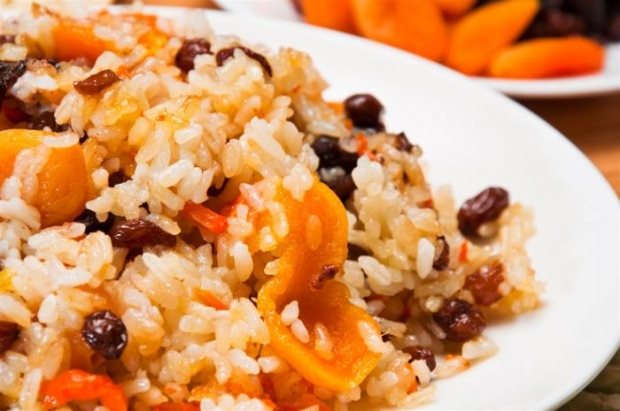
Also among young mothers, the question is whether it is possible to consume rice soup while breastfeeding. In the soup, rice porridge is supplemented with vegetables and liquid, therefore, it will not become strong, while all its beneficial properties are preserved. In order for this dish to benefit a nursing mother and baby, it is necessary to prepare the soup using light chicken broth and adding a minimum amount of seasonings.
The benefits of rice porridge for a nursing mother and baby
Rice porridge is considered a dietary and healthy product. The unique combination of carbohydrates and vegetable protein in it ensures that when consuming it, a feeling of fullness comes very quickly.
Rice while breastfeeding:
- provides mom with energy, “right” calories,
- activates digestion and metabolism,
- participates in the processes of creating new cells, regeneration, promotes renewal of the body,
- stimulates brain function, has a beneficial effect on the activity of nerve cells and neuronal conductivity,
- improves mood, normalizes sleep,
- strengthens bone tissue and tooth enamel,
- improves the condition of the skin, hair, nails,
- cleanses the body, helping to remove waste, toxins, excess fluid from it,
- serves as a good prevention of diseases of the heart, blood vessels, kidneys, gastrointestinal tract and is an excellent means for restoring the intestinal mucosa in case of digestive disorders,
- helps to increase the production of breast milk, improve its quality composition, and therefore ensures normal weight gain for the baby according to age,
- does not contain gluten, which means it rarely causes allergic reactions, which is very important during lactation.
Rice porridge will help a nursing mother regain her strength as quickly as possible after giving birth to a child without gaining excess weight. And the baby from breast milk will receive all the benefits that the mother’s body can extract from rice grains.
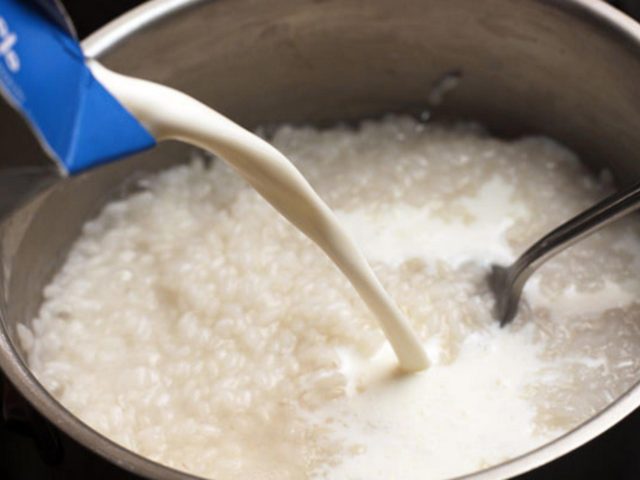
Rice porridge with milk has greater nutritional value than one cooked with water.
Rice porridge recipe
Required:
- rice (white, short grain) – 130 g;
- cow's milk – 180 ml;
- water (settled or boiled) – 250 ml.
Rinse the rice and let stand in water for 15-20 minutes. Carefully drain the water. This will wash away excess starch, nitrates and dirt. It will also reduce the cooking time for porridge. Add cereal to boiling water (sugar or salt depends on taste preferences), cook for 1/3 hour. Add heated milk and finish cooking the porridge. The rice should be completely soft, but not overcooked. Often mothers worry whether a nursing mother can eat rice while breastfeeding. If the child behaves as usual and nothing bothers him, then there is nothing to worry about. And this dish can be consumed several times a week (especially if brown rice is used), but in limited quantities so as not to cause constipation.
Contraindications and precautions during lactation
Despite all the usefulness of rice porridge, its excessive consumption can lead to constipation, flatulence and colic in both mother and baby. Therefore, during breastfeeding, a woman can eat rice no more than 2-3 times a week, alternating rice porridge with porridge from other grains, and the serving size should be no more than 200-250 g.
In large quantities, rice can even harm the body:
- if you eat too much brown rice, the substances contained in its shell will interfere with the absorption of calcium and iron in the gastrointestinal tract,
- if you eat a lot of white rice, problems with the heart and blood vessels may occur.
If you have an individual intolerance to rice grains (this is very rare), you should avoid eating dishes made from them. Rice is also contraindicated for frequent constipation and colic.
A nursing mother should introduce rice porridge into her diet gradually. Start with a teaspoon. If the baby’s digestion is fine and no rashes appear on the skin, then the next day you can eat two teaspoons, then three, and so increase the portion until you reach the recommended volume.
In the first month after birth, the child is just adapting to a new lifestyle and a new environment. His digestive system is still imperfect. Sometimes, not enough enzymes are produced in the gastrointestinal tract for complete digestion and absorption of food. Hence the frequent digestive disorders - diarrhea, constipation, intestinal colic.

Rice porridge should be introduced into the diet gradually, starting with a teaspoon per day.
To reduce the likelihood of such problems in your baby, before he reaches three months of age, eat rice porridge cooked in water. And only then can you gradually try to introduce porridge with milk into your diet. If lactase deficiency is diagnosed in a child, the mother should not eat rice porridge with milk.
If, after introducing rice porridge to a nursing mother’s menu, the baby develops digestive disorders, try reducing the portion. If the problem persists after this, stop eating rice for a while. And after a month, try introducing it into your diet again.
Brown brown rice is the highest quality and healthiest. It is better to give preference to it or steamed, long-grain. To compensate for the ability of rice porridge to fix stool, add prunes or apples to it (they also need to be gradually introduced into the diet beforehand) or drink a glass of low-fat kefir (yogurt) after eating the porridge.
By the way, rice porridge cooked in water differs in nutritional value from that cooked in milk. The content of proteins and fats in dairy will be higher, and less carbohydrates.
Table: analysis of the energy value of rice porridge cooked in milk and rice porridge cooked in water
| Element | Quantity per 100 g | |
| Rice porridge on water | Rice porridge with milk | |
| Calorie content | 78 kcal | 97 kcal |
| Squirrels | 1.5 g | 2.5 g |
| Fats | 0.1 g | 3.1 g |
| Carbohydrates | 17.4 g | 16 g |
You can also add lean fish, meat, and vegetables to the porridge. The fattier the dish, the greater the likelihood that after the mother eats it, the baby will experience colic and flatulence.
Rice porridge will contain fewer calories if you soak the rice in water before cooking it and cook it with the addition of vegetable oil.
And one more feature of rice porridge: it cannot be stored for a long time, even in the refrigerator. It becomes a favorable environment for the development of pathogenic microflora. Cook rice in small quantities so that dishes prepared from it are not left for later.
Video: Dangerous Secrets of Rice
Useful and harmful properties of rice
To understand whether a nursing mother can eat rice, you need to carefully study the entire list of beneficial properties and contraindications of this cereal.
Useful properties of rice:
- Ensures proper weight gain in infants.
- Promotes the formation and growth of new cells in the body.
- It has a fixative effect, eliminating problems with stool in nursing mothers and babies.
- Improves lactation.
- Thanks to the high content of B vitamins, it strengthens hair and improves skin condition.
- Phosphorus and calcium contained in rice strengthen tooth enamel.
- The high content of complex carbohydrates makes rice very nutritious, but not difficult to digest.
- Recommended for women with cardiovascular diseases and renal failure.
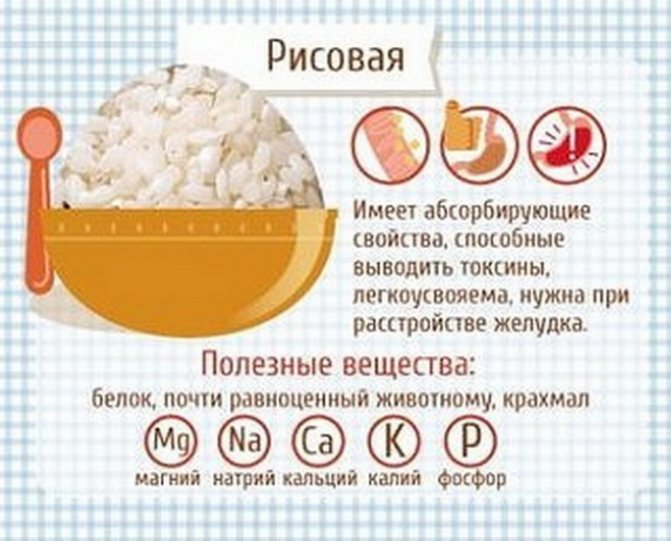
Despite the extensive list of beneficial properties of rice, it also has a number of harmful qualities:
- The fixative effect of rice can be attributed to both the pros and cons of the product, depending on each specific case. It is possible that the mother or baby needs the completely opposite action - relief from constipation. In this case, you should limit your rice intake.
- Rice is considered a low-allergenic grain, but if you eat too much of it during breastfeeding, it can cause increased gas formation and colic in the baby.
- The shell of unprocessed rice contains phytic acid, which interferes with the normal absorption of calcium and iron.
- Regular consumption of rice in large quantities can lead to increased blood pressure and the development of diabetes.
- Many manufacturers treat rice with synthetic agents to protect the grain from pests, give it an attractive appearance and improve its taste.
Therefore, to the question whether it is possible to eat rice while breastfeeding in the first month of a child’s life, the answer is definitely negative. The baby’s digestive system is still adapting to the new way of eating, and the substances with which rice cereal saturates mother’s milk can interfere with the normal functioning of the gastrointestinal tract, for example, causing constipation in the baby. It is better to postpone this dish until the second month. And in order to reduce its fixing properties, you need to follow a simple recommendation: add to rice foods that, on the contrary, can relax the intestines, for example, plums or apples. Using the same principle, it is recommended to prepare rice soup during feeding, since the liquid and vegetables included in its composition will reduce the fixing effect.
Is it possible for a nursing mother to have rice?
Despite the enormous benefits of rice, it can still be harmful to the body of mother and baby. You need to be careful with this food product and follow moderation.
Rice cereal consumed in large quantities is fraught with constipation in both mother and child. Because rice strongly strengthens the intestines, the baby may have upset stools and colic.
If the rice is of poor quality, a woman is at risk of diabetes, kidney stones and high blood pressure are also possible. If a child has problems with stool or colic, it is better not to rush to introduce rice into the diet. Phytic acid, which is present in rice cereals, negatively affects the absorption of calcium and iron.
Women often limit the amount they eat after having a newborn. The reasons are different. Allergic reactions, myths, fears. There are several clear prohibitions: cigarettes, alcohol, certain medications. Coffee, fast food, chips and the like - in rare cases, but it is advisable to avoid. Other food products are limited when there are direct recommendations from a doctor, intolerance. The latter is verified in practice.
Cereals, vegetables, fruits, boiled meat are healthy. You need to introduce it little by little. You can't try several at once. After eating a small portion, you need to wait. If there is no reaction, you can enter the following. Overeating and limiting yourself to one type of food is harmful. Variety, moderation, caution are the keys to success.
A woman should eat porridge. Buckwheat, peas, millet, barley, pearl barley are a storehouse of useful substances, vitamins, and microelements. It should be based on the characteristics of the body.
Rice makes you feel full quickly. The absence of extra calories will help bring your weight to normal levels. Carbohydrates restore sugar levels and provide energy. There are negative sides. Excess affects digestion and can cause problems with bowel movements. The decision whether to eat rice during breastfeeding or not is made after consultation with a pediatrician.
Rice contains many vitamins and beneficial microelements that help maintain a nursing mother’s body in normal condition. The high content of slow, healthy carbohydrates promotes quick satiety and helps satisfy hunger for a long time, which is especially important when there is absolutely no time left for yourself.
Due to the absence of gluten, the risk of an allergic reaction in the baby is extremely low, which is especially important when choosing nutrition during breastfeeding. The high content of amino acids, vitamin E and group B has a beneficial effect on both the nursing mother and the baby.
The full development of the child, as well as the reduction of hair loss and brittle nails in a woman after childbirth, is ensured by microelements such as calcium, phosphorus, potassium, magnesium, iron, zinc and other substances found in rice. This product must be present in the diet of a young mother if the child does not have a negative reaction to it.
Every nursing mother wants to diversify her diet. It is no secret that, on the advice of grandmothers and even doctors, many eat only buckwheat for the first couple of months, thereby depleting their body and not giving the baby everything necessary for development. It should be remembered that the baby needs a healthy mother, and poor nutrition is a direct path to disruption of many processes in the body.
With insufficient amounts of nutrients, vitamins and minerals in a woman’s diet, recovery after childbirth takes longer, and various diseases literally “stick” to the young mother, whose immunity does not have the strength to resist infections. It is very important to create a menu correctly, especially during breastfeeding, when some foods can cause a negative reaction in the baby.
Of course, all foods should be introduced into your diet gradually, observing the baby’s reaction, but you cannot completely deprive yourself of the opportunity to eat tasty and nutritious food. Inexperienced women who are concerned about the health of their newborn are often interested in the list of permitted products. Sometimes it turns out that this list is limited to a very meager set that does not include fruits and vegetables, as well as other products that contain all the necessary substances for the normal development of a newborn and maintaining the health of a woman.
Can a nursing mother have rice? This question worries many for the reason that such cereals are very popular, and you can prepare different dishes from it, combining it with other products. Initially, when breastfeeding there is no prohibition on it and there cannot be, since it is not even included in the list of allergens prohibited if the baby is predisposed to the appearance of a rash. You should pay attention to rice dishes because it has many advantages, among which the following can be noted:
- Due to the high carbohydrate content in cereals, if consumed regularly by a nursing mother, the baby will steadily gain the required kilograms. At the same time, weight gain will not affect the amount of fat deposits.
- Gluten, which negatively affects the thin walls of the baby’s stomach, is absent in this cereal, so the risk of allergies is minimal. This is one of the few cereals that does not contain such a substance.
- After childbirth, a woman’s body, when consuming such cereals, is cleansed and excess toxins and waste are removed. In addition, rice is very filling, thanks to which hunger is satisfied for a long time, allowing you to quickly return your figure to the state it was before pregnancy.
- Thanks to the content of B vitamins, a young mother’s skin is cleared, hair loss and nail brittleness are reduced, and the risk of dental health problems is reduced. When a baby receives mother's milk, rich in vitamins, his nails become stronger and his hair grows quickly.
- There is an opinion that rice porridge can increase the amount of milk. This assumption is controversial, but sometimes women actually notice an improvement in the outflow of nutrient fluid.
- If a child or mother has weak stools, rice porridge can cope with these problems. It is useful for a woman to eat it when she is poisoned to stop diarrhea and restore the amount of nutrients in the body.
- Having a positive effect on the nervous system, rice cereal in the diet of a nursing mother ensures healthy and sound sleep for the child. Thanks to this, parents get enough sleep and feel good.
- Eating brown rice has a positive effect on the cardiovascular system of a woman and baby, and also normalizes kidney function. If you have diseases of these organs and systems, you should definitely include this cereal in your diet.
A large number of beneficial properties makes you think about whether it is worth eating rice while breastfeeding. Its inclusion in the diet is beneficial both for a young mother, whose body is exhausted after childbirth and requires vitamins, and for a newborn, who is actively growing and developing. Another indisputable advantage of this cereal is that you can prepare a wide variety of dishes from rice that will appeal to every family member.
We invite you to read: How to introduce pumpkin for the first time to your baby?
In addition to many advantages, rice also has some disadvantages. The most important and only serious drawback is the fixing effect after eating rice. It is observed in both mother and child, especially when consuming the product in the form of porridge. This is due to the fear of most women about eating this cereal, because after childbirth, stool is not always stable.
Constipation in a child causes enormous suffering for the whole family, when the baby cannot go to the toilet, you have to resort to an enema or special suppositories. Due to insufficient development of the gastrointestinal tract, anything can provoke problems with stool in the first three months of life, so many mothers play it safe. There is also a minimal risk of the following reactions to rice:
- bloating in the child, increased gas formation;
- individual intolerance to the product, which is extremely rare.
Considering all the pros and cons, we can conclude that you should definitely try rice cereal, since its beneficial properties overshadow the possible harm. With moderate consumption, the likelihood of negative consequences is minimal, so rice can be present in the diet of a nursing mother from the very birth of the baby.
Rice has few contraindications, but when breastfeeding, the mother should pay special attention to them so as not to harm herself and the baby. Eating rice is prohibited in the following cases:
- Obesity in a young mother or too much weight in a newborn. Due to the high carbohydrate content, there is a risk of weight gain, which can lead to various serious diseases.
- Chronic constipation in a woman or problems with bowel regularity in an infant. Due to the fixing effect, the situation will seriously worsen, up to the need for medical intervention. Eating rice should be postponed until you get rid of problems of this nature.
- Baby has colic. Often, problems with the intestines are caused by insufficient development of the intestines; the intestines lack the bacteria necessary for proper functioning. Eating rice can complicate the situation and cause pain in the baby. In addition, bloating and increased gas formation also cause discomfort. Before preparing a rice dish for yourself, you should make sure that there are no problems in your intestines.
The list of situations in which rice dishes must be excluded from the diet is very small. If they are absent, you can safely try this cereal, but if at least one of the points is present, eating rice should be postponed.
Can a nursing mother have rice?
You have a baby. The little baby needs you around the clock. After all, his mother is the most important person in the world for him:
- loving hands,
- familiar smell
- heart beat
- and of course, breast milk.
How to eat so that milk is beneficial for the child and does not lead to red cheeks or digestive disorders?
Rice while breastfeeding
Many nursing mothers believe that cereals should make up the majority of a healthy diet. For example, buckwheat porridge helps increase hemoglobin levels, and oat porridge is rich in vitamins E, K and B, as well as fiber, calcium and zinc. At the same time, many women wonder whether a nursing mother can have rice?
Rice itself is a valuable source of complex carbohydrates. The most important thing for you as a breastfeeding mom is that rice is gluten-free.
Gluten is one of the most common causes of allergies in infants.
Modern cooking offers young mothers many healthy and quite tasty rice-based dishes. Many young mothers are partial to regular steamed rice porridge. If you add some fruits or vegetables to it, it will be even more healthy. The main thing is that fruits are not allergens.
Quantity of rice
Despite the beneficial properties and taste of rice dishes, you should not think that this product can be consumed in unlimited quantities. After all, rice strengthens the intestines, which leads to constipation in both the mother and her child. You should not overuse rice porridge in the first months of a child’s life. Once every few days you can eat just one dish with rice. This is the most optimal amount of rice during lactation.
To prevent rice porridge from having a strong fixing effect, you should add to the porridge those foods that can relax the stomach.
These products include:
- plums,
- apples,
- bananas
- prunes.
Eat healthy and healthy. If your child reacts normally to rice, then you can safely eat rice several times a week.
Of course, it is very difficult to create the optimal menu for a nursing mother. After all, it is worth taking into account all nutritional standards, the individual characteristics of the child’s and mother’s body. But you can eat rice from the first days after birth, and throughout breastfeeding.
Be healthy!
Get a nutrition chart for a nursing mother right now to protect your baby from allergies, colic and abdominal pain.
Enter your email and click on the “GET” button
uroki4mam.ru
